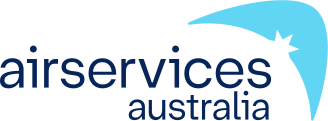Do planes have to stay on flight paths?
What is a flight path?
The term ‘flight path’ is used to refer to the mapped three-dimensional corridor where aircraft fly most of the time. Flight paths can be a number of kilometres wide, rather than the single lines depicted on flight charts (maps). Aircraft may fly differently within these corridors for a range of reasons, including aircraft performance (including type, speed and weight), and navigation systems.
Aircraft may deviate from flight paths for a range of reasons, including weather and operational requirements. In controlled airspace, this will be at the approval of air traffic control (ATC).
Weather diversions
During periods of bad weather aircraft may need to be diverted off the normal flight paths to avoid storm cells, heavy rain and dangerous cloud formations. Sometimes this bad weather is not in your local area but it can be detected many nautical miles away by sophisticated weather radar systems that are installed in modern aircraft. If a pilot requests a diversion to avoid bad weather this will be facilitated by air traffic control. This can result in aircraft flying outside the published flight paths.
Traffic management
Sometimes air traffic controllers need to take aircraft off the published flight path in order to ensure that safe separation is maintained between aircraft. For example, this might occur when the volume of traffic in the airspace is high, such as during peak periods, or it might occur when a jet is flying behind a slower turbo-prop aircraft. The slower plane may need to be turned off the flight path so as not to delay the faster jet. This can result in aircraft flying outside the expected paths.
Missed approaches
A go-around, or missed approach (also sometimes referred to as an aborted landing), is a safe and well-practiced manoeuvre that sees an aircraft discontinue its approach to the runway when landing. This standard manoeuvre does not constitute any sort of emergency or threat to safety. It will however result in the aircraft flying an unusual flight path as it climbs and circles around for another approach.
The most common cause of go-arounds is adverse weather conditions, including strong winds, experienced by the aircraft on final approach. Debris on the runway, an aircraft (or vehicle) that has not yet cleared the runway or an aircraft that has been slow to take-off may also prompt go-arounds.
Emergency services operations
The published flight paths may be varied to avoid disruption to high priority emergency aircraft including aircraft involved in fighting bush fires, search and rescue, medical or police operations.
Light aircraft and helicopters
Generally, published flight paths are for aircraft flying according to Instrument Flight Rules (IFR), which is where the pilot uses instruments to fly.
Helicopters and light aircraft often fly Visual Flight Rules (VFR) where the pilot uses visual references to the ground or water and does not fly on a set flight path.


